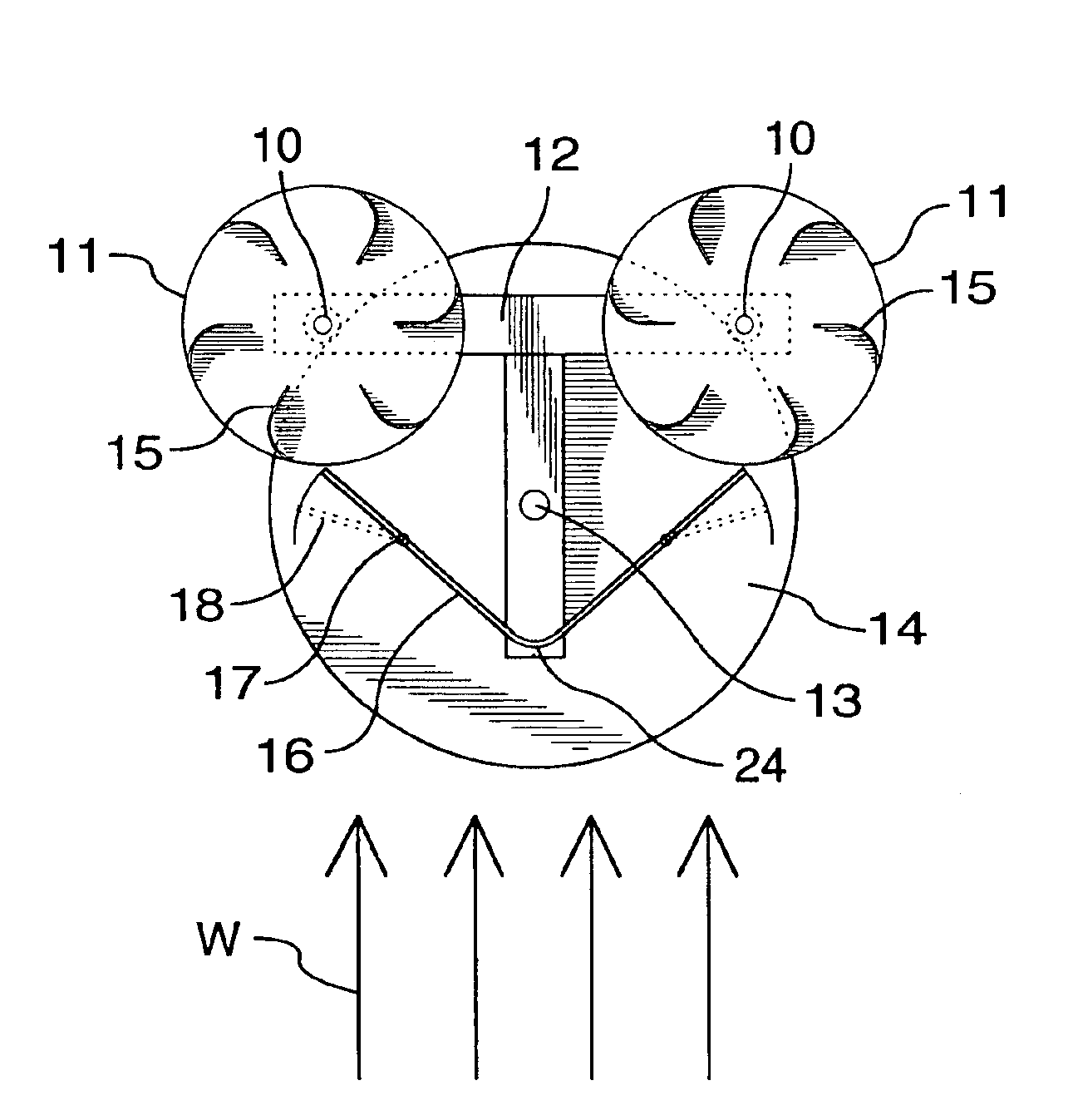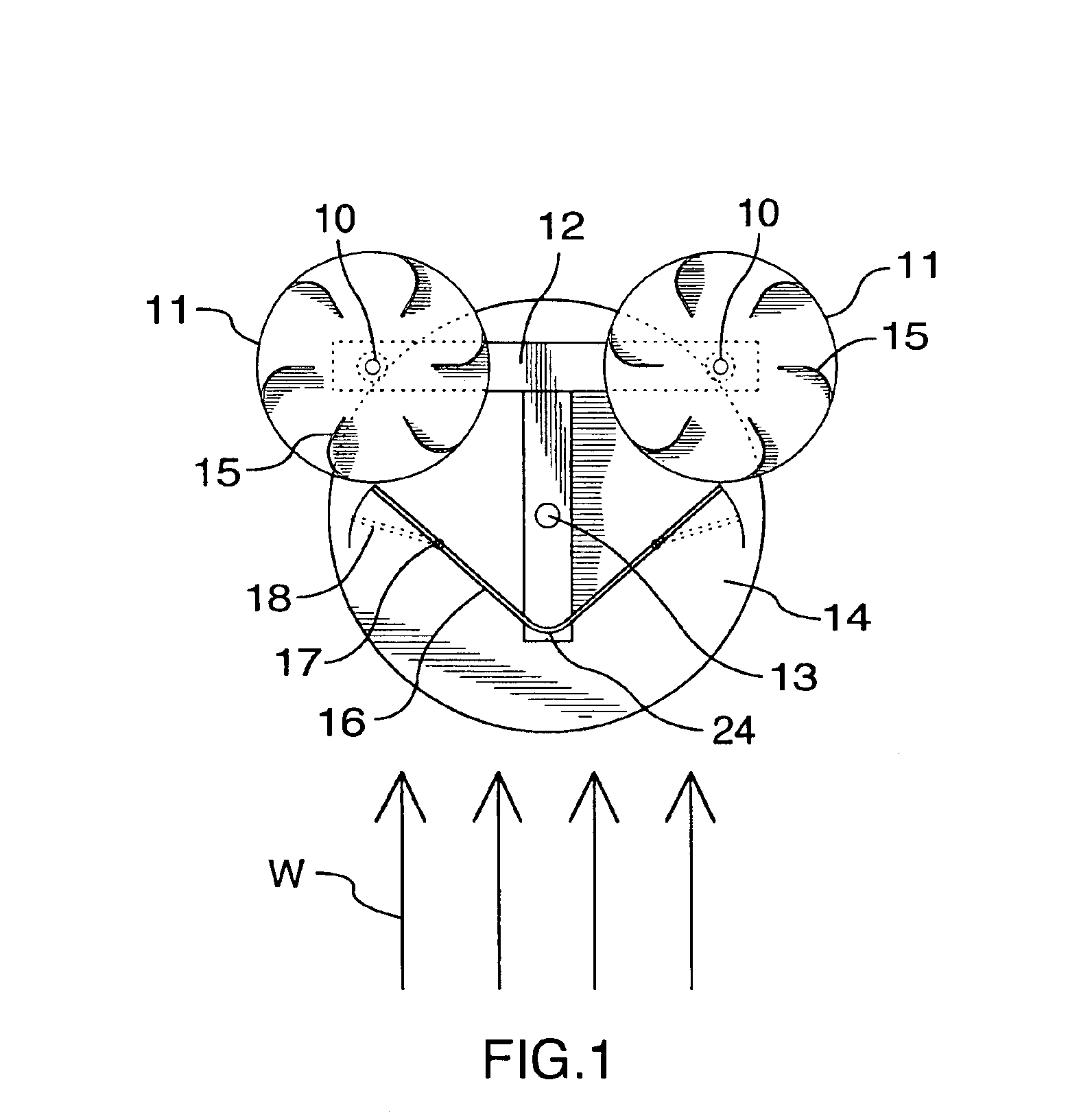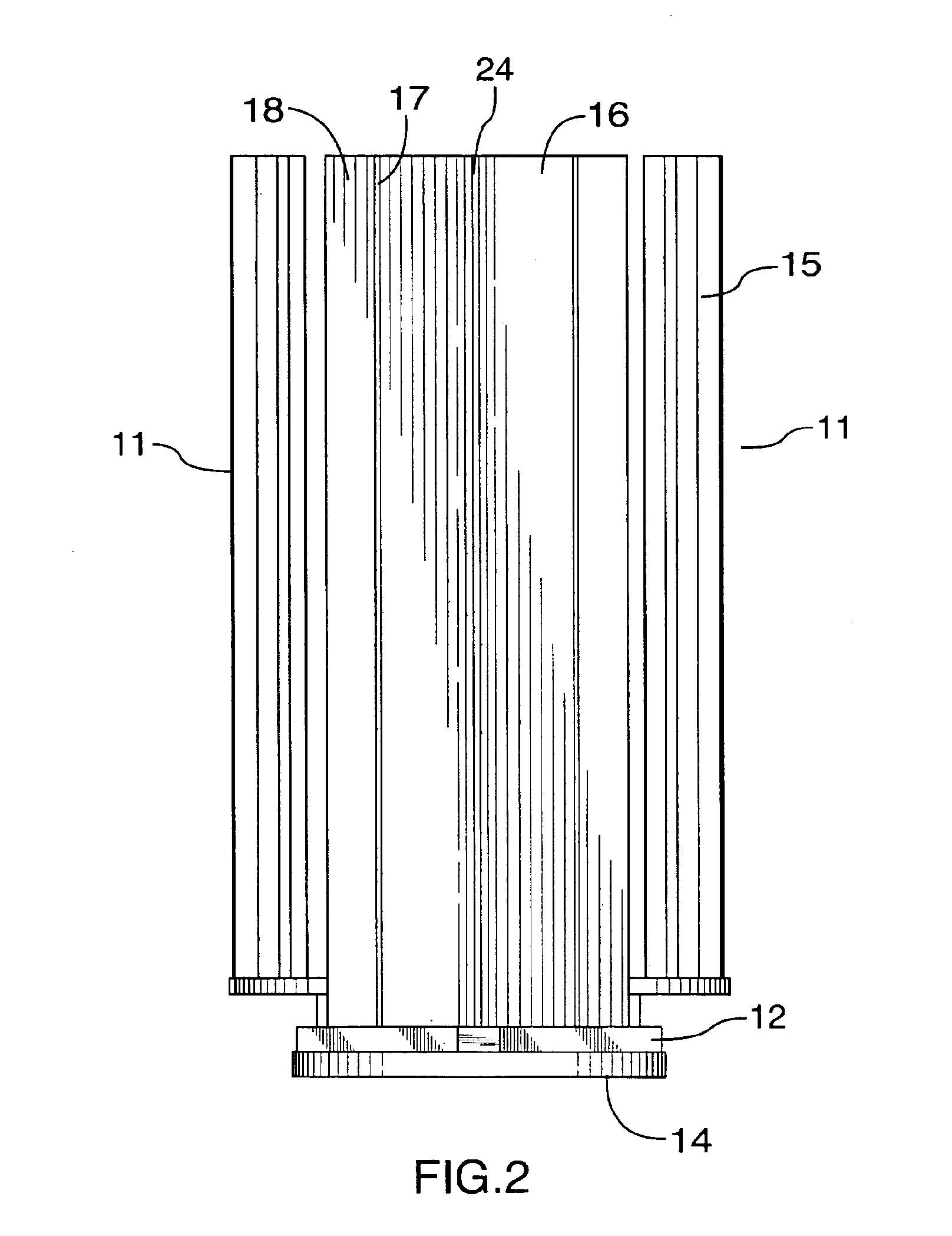Vertical axis wind turbine
a vertical axis, wind turbine technology, applied in the direction of wind motors with perpendicular air flow, non-positive displacement fluid engines, liquid fuel engine components, etc., can solve the problems of omni-directional vawts, hawts that do not lend themselves to do-it-yourself construction and actually grow attractive with size, and negative impact on overall system efficiency and cost. , to achieve the effect of excellent efficiency
- Summary
- Abstract
- Description
- Claims
- Application Information
AI Technical Summary
Benefits of technology
Problems solved by technology
Method used
Image
Examples
Embodiment Construction
[0031]FIG. 1 is a top view of the vertical axis wind turbine (VAWT), from which the principle of the invention can be readily seen. There are two rotors 11 on a T-shaped support structure 12. Each rotor is mounted on a rotor axis 10. The support structure is rotatable around a center axis 13 on a support platform 14, which in turn will sit on a cylindrical foundation or tower (not shown) of a height determined by topographical parameters. Preferably, the rotors feature six blades 15 each, though that number could vary if desired. One vertical, curved guide vane 16 mounted on the support structure sits centered in front of the two rotors 11. Preferably, two vertical hinges 17 render the two straight ends of the guide vane 16 into deflector flaps 18.
[0032]FIGS. 2-4 are corresponding front, side and perspective views. FIGS. 1-4 are schematic, in that no upper support structure is illustrated, for greater clarity. However, in practice there would be an upper support structure similar to...
PUM
 Login to View More
Login to View More Abstract
Description
Claims
Application Information
 Login to View More
Login to View More - R&D
- Intellectual Property
- Life Sciences
- Materials
- Tech Scout
- Unparalleled Data Quality
- Higher Quality Content
- 60% Fewer Hallucinations
Browse by: Latest US Patents, China's latest patents, Technical Efficacy Thesaurus, Application Domain, Technology Topic, Popular Technical Reports.
© 2025 PatSnap. All rights reserved.Legal|Privacy policy|Modern Slavery Act Transparency Statement|Sitemap|About US| Contact US: help@patsnap.com



